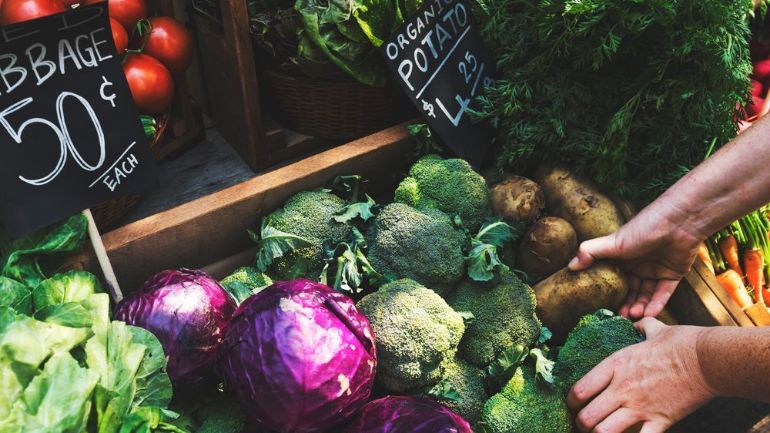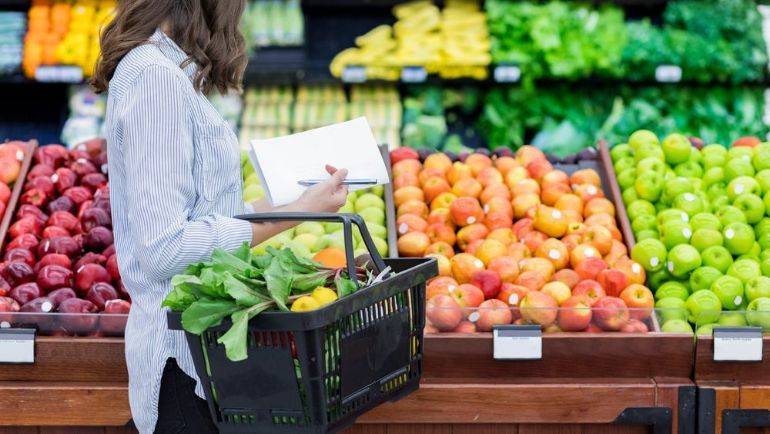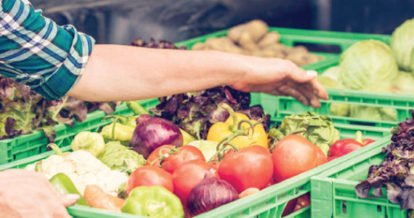If you’ve been following the news over the last few weeks, you’ve likely read the words “trade war” in reference to import tariffs for the United States, Canada, the European Union, and China.
If you’re a restaurateur in the United States or Canada, you probably want to know how changes to import tariffs will affect your restaurant, if at all. Here we’ll answer that question for you – while leaving the politics to CNN.
What Are Import Tariffs?
Import tariffs are taxes on goods coming into your country from other countries.
Tariffs are created by governments for a wide variety of reasons, and they affect a wide variety of products, from natural resources to food products. The purchaser of the foreign product pays the tariff to import the product into his or her country.
Why Are People Talking about Import Tariffs So Much Lately?
As part of the Canada-United States-Mexico Agreement (CUSMA), the U.S., Canada, and Mexico had established a level of free trade, but recent trade tensions have led to significant tariff disputes. On March 4, 2025, President Trump imposed 25% tariffs on all goods imported from Canada and Mexico, with a 10% tariff on Canadian energy products. This followed previous U.S. tariffs on steel and aluminum, sparking a trade conflict with Canada, Mexico, and other countries.
In response, Canada retaliated with 25% tariffs on $30 billion worth of U.S. goods, such as orange juice, wine, and appliances. On March 5, Trump temporarily exempted autos and parts under CUSMA, but tariffs on other goods remained. By March 6, the U.S. expanded exemptions for CUSMA-covered products, but kept tariffs on non-CUSMA items like energy products and potash.
On March 10, Ontario imposed a 25% surcharge on electricity exports to certain U.S. states, but paused the surtax after discussions on March 11 with U.S. officials. On March 12, the U.S. imposed 25% tariffs on Canadian steel and aluminum. A day later, Canada responded by imposing tariffs on an additional $29.8 billion worth of U.S. goods, including steel and aluminum.
Meanwhile, China retaliated by imposing tariffs on Canadian food imports on March 20, including 100% tariffs on canola oil and 25% on seafood and pork. On April 2, the U.S. announced plans for reciprocal tariffs on countries with existing tariffs, including Canada, which could affect products like automotive parts, dairy, and pharmaceuticals.
These escalating tariffs reflect broader global trade disputes, reshaping international trade dynamics, and impacting businesses and consumers worldwide, creating widespread conversation surrounding tariffs.
Import Tariffs Affecting American and Canadian Foods
So what does all of this have to do with the food and beverage industry? Tariffs affect supply availability and costs, which has a direct impact on farms and restaurant owners. We’ll get to how import tariffs affect farmers in a moment, but first – which food and beverage items are affected by import tariffs?
Tariffs on U.S. food items to Canada
As of March 4, 2025, Canada has implemented a 25% tariff on a range of U.S. food and beverage products. For a full list, please visit here.
Affected Products:
- Poultry
- Meat and edible meat offal
- Milk and cream, yogurt, buttermilk, curdled milk, whey, butter and other milk-derived fats and oils, cheese and curd
- Eggs and egg yolks
- Natural honey
- Tomatoes
- Leguminous vegetables and nuts
- Citrus fruit, melons, apricots, cherries, peaches, nectarines and plums
- Coffee and tea
- Pepper, vanilla, cinnamon, cloves, nutmeg, mace, cardamoms, anise, badian, fennel, coriander, cumin or caraway seeds, ginger, saffron, turmeric, thyme, and bay leaves.
- Wheat and meslin
- Rye, barley, oats, rice
- Vegetable saps and extracts
- Fish oils, ground nut oils, sunflower-seed, safflower or cotton-seed oil, canola oil, palm oil, mustard oil
- Margarine
- Sausages and other prepared or preserved meat, blood or insects
- Casein, albumins, and peptones
- Crustaceans, mollusks and other aquatic invertebrates
- Sugar (cane, beet and other sugars, including confectionary)
- Molasses, chocolate and malt extract
- Pasta
- Vegetables, fruit, nuts and other edible parts of plants, fruit and nut juices, prepared or preserved
- Sauces, soups and broths
- Ice cream
- Water, beer made from malt, wine, vermouth, other fermented beverages, undenatured ethyl alcohol
Tariffs on U.S. food items to the EU
As of April 1, 2025, the European Union (EU) will implement retaliatory tariffs on a range of food and agricultural products. These measures are a response to U.S. tariffs imposed on EU steel and aluminum imports.
The affected U.S. food items include:
- Meats, such as beef and pork products
- Seafood, including various fish and shellfish
- Dairy Product, including cheese and milk-based items
- Confectionery, including chocolates and sweets
- Soybeans, which is a significant agricultural export to the EU
- Almonds, which is another major agricultural export targeted
Tariffs on Canadian items to the U.S.
Canada has responded to the U.S. imposition of tariffs on Canadian goods by introducing a first set of countermeasures designed to compel the U.S. to remove the tariffs as soon as possible.
Here is a list of affected U.S. products, including, but is not limited to:
- Orange juice
- Peanut butter
- Wine
- Spirits
- Beer
- Coffee
Tariffs Imposed by Mexico and U.S.
As of March 19, 2025, the United States and Mexico are engaged in ongoing negotiations concerning trade tariffs. The outcome of these negotiations remains uncertain, and stakeholders are closely monitoring developments as the April 2 deadline approaches.

Possible Effects of New Import Tariffs on the Restaurant Industry
Now to answer your most burning question… how will these new tariffs affect me and my restaurant? To answer that we must first address how tariffs affect the source of your food – farmers.
What do import tariffs mean for farmers?
Unless your restaurant grows all of its own food, you’ll likely be affected by that which affects farmers.
In theory, countries import foreign goods for two reasons: the product is not available domestically or it’s cheaper to import the product than to buy it domestically.
If import tariffs make foreign goods more expensive, domestic goods may become more competitively priced – which should mean that businesses will purchase more domestic goods. If this happens, it should follow that farmers can expect more domestic sales.
But – 40% of foods grown by American farmers are sold overseas. So if foreign businesses are discouraged from buying these products due to tariffs, American farmers will need to find many new domestic customers to fill the gap.
If farmers are unable to replace their foreign buyers, they will likely have to increase prices for domestic customers to make up for the lost profits – which is how this story becomes about you, the restaurant owner.

5 Ways Restaurateurs Could Be Affected by Food Tariffs
Here are some ways that import tariffs can affect restaurants in the United States and Canada.
1. Inventory costs could go up.
Any lost revenue associated with import tariffs may be passed down from your food supplier to you, the restaurateur, through higher prices.
So here is your potential dilemma: If you pay more for your food and keep your prices the same, your profit margins may suffer. On the other hand, if you raise prices, you may lose some customers.
So take a look at your last few inventory orders and compare them to the list of products affected by tariffs: do you order a lot of products currently on that list?
If so, it may be time to tweak your menu a little to curb future costs. While this is not a perfect method for dealing with rising inventory costs due to tariffs – farmers may increase the price of other items to make up the difference – it’s a great place to start.
2. Independent restaurants may feel the pain more than restaurant chains.
Due to differences in bulk ordering, independent restaurants will likely feel more pain than large restaurant chains.
If food suppliers pass costs down to restaurateurs, restaurant chains may be able to absorb the increase in food costs without changing their menu prices. Chains rely on sales from several national – and sometimes international – locations, and therefore may have a larger capacity to absorb higher costs overall. Independent restaurants, however, may need to raise menu prices to offset costs.
3. Locavore restaurants may grow in popularity.
“Locavore” restaurants that specialize in sourcing food from local farms or producers may gain popularity as a result of import tariffs.
Farm-to-table restaurants promote community involvement, seasonal eating, and environmental sustainability – but within the context of import tariffs, those messages are strengthened as they also promote supporting local farmers and only eating what they grow.
So those restaurants that already specialize in sourcing local ingredients may thrive because of the growing awareness of the importance of eating local.
4. Food patriotism may become a growing trend.
To piggyback on the possible growing trend of locavore restaurants, consumers may feel a patriotic urge to dine “locally” and avoid foreign products.
In Quebec, Canada, for example, the owners of Lala Bistro have removed American products like Heinz ketchup and California wines from their menu as a response to American tariffs.
Restaurants in the U.S., Canada, and the European Union may also follow suit and spark a nationalist food revolution, whereby restaurants that serve only domestic foods will benefit.
5. Restaurateurs may need to go seasonal with their menus.
So we know that cost prohibitive tariffs may make it more difficult to get ingredients from abroad if domestic supplies are limited. That means if a product is not in season in the U.S., for instance, it may be more difficult to get that same product for a reasonable price.
This is when you may need to consider seasonal menu changes. Some restaurants, especially farm-to-table restaurants, may already be accustomed to changing their menus on a seasonal basis.
Take a look at your sales and inventory reports in your POS here – what are your reports telling you about the past performance of your seasonal dishes? Which ingredients do your bestselling items and worst selling items contain, and how much do they cost? Looking at historical data can help you make decisions that will boost seasonal sales and save you on costs in the long run.
Other restaurants, however, don’t modify their menu as much to reflect products that are in season. If you’re one of these restaurants, you may want to consider reviewing your inventory costs through a seasonal lens and changing your menu accordingly.
No industry is immune to politics, and import tariffs do have the potential to greatly affect American and Canadian restaurants – at least in the short term while farmers adjust to changing circumstances. As with every aspect of your business, you’ll need to remain creative and flexible to help offset the effects of increased costs.
Download our free inventory template
Sign up for our free weekly TouchBistro Newsletter







